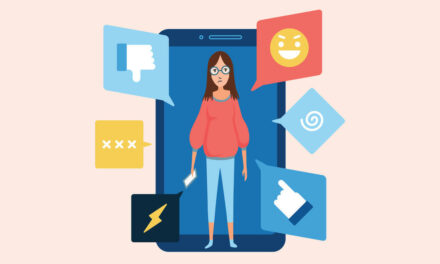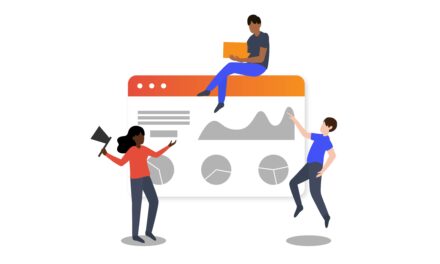Remember when Amazon first started giving us product recommendations? I’ll always remember the first time I saw that now-famous line: “Customers who bought this item also bought…” It’s no exaggeration to say that line changed my life for the better. Although it’s now common to see similar recommendations on many sites and apps, the concept was revolutionary back in the early 2000s – and it blew me away. As an avid reader, I found myself unable to resist those recommendations, and I loaded my shopping cart with books I ended up loving.
I call this concept “the power of suggestion.” Psychologists often use this term to describe the power of our expectations to drive our experiences. Expect a painful visit to the dentist, for example, and you’re setting yourself up for an uncomfortable experience. Anticipate winning a basketball game, on the other hand, and you’re likely to train in ways that lead to success.
Technology has evolved to use a different power of suggestion: intelligently analyzing our behavior, and suggesting next-best actions we might like to take. Just about all of us have found ourselves drawn into the vortex of Netflix recommendations, for instance. But what if these tools not only recommended movies and songs and books, but actively helped us become more effective at our jobs?
Here’s how the power of suggestion will become the next frontier in business software.
Proactive Personalization
In the realm of personal finance, many of us (myself included) often feel reactive rather than proactive. We know what our salaries are, when we can expect our paychecks to hit our bank accounts, and how much to budget for rent and food. When bills arrive, we pay them. This approach works well until something unexpected happens – a huge credit card bill lands in our inbox, for example, and suddenly we’re scrambling back through our bank statements, trying to figure out where we went wrong.
If you use an app that tracks your spending, however, you might get an early warning when your spending is higher than usual, giving you time to do some damage control. But in the near future, these alerts won’t simply be binary – your app will integrate and analyze a wealth of data from your bank, your social media “likes,” and a range of other sources (subject to your approval, of course), which means it’ll be able to alert you before you drop $500 on that designer jacket you’ve been eyeing.
In other words, the next few years of consumer experience will be defined by a shift from reactive alerts to proactive personalization. We’re already seeing this shift in sectors like retail, where chains use in-store purchase patterns to generate personalized offers for customers. In the realm of media, too, many of us now expect to wake up to automatically optimized driving routes and personalized music playlists.
And yet, as we all know, consumer technology tends to be several years ahead of the tools we use in the workplace. Many of us still have to attach documents to emails in the office, even though we edit them in the cloud on our personal devices – and in the same way, we’re still waiting for automated, personalized suggestions from our productivity software. But those new tools are now on the horizon.
Recycling Resources
Start with a simple concept: say you get an email from me, and you’re looking for a conversation we had about the same topic a few years back. You can’t find that conversation in your email archives, so now you’re digging through our social-media chats, presentations we’ve done together, and all kinds of other files. Worse, this whole search process depends on your own personal (and fallible) system of file management. Imagine how much simpler it would be if you could just tap a “Mark” button, and all the interactions we’d ever had, on every platform, popped up in a neat little list.
Some customer relationship management (CRM) platforms already do this, as long as all the interactions have taken place within software that’s hooked up to the CRM system. Those platforms can even recommend next actions in the sales pipeline, and automatically add appointments to calendars – provided they’ve been given a sales template to work from. But functionality like this is only the beginning of the power of suggestion.
For example, imagine if instead of starting a PowerPoint presentation from scratch, you could leverage the best work that already exists within your company. Today, this task would require your company to create a huge index of everyone’s work – in other words, it’s nearly impossible. But with assets such as photography, the visual search paradigm is already making this old way of cataloging obsolete. The logical next step is for your work product to benefit from automatic recommendations based on similarities in content, rather than just overall templates or styles.
The power of suggestion will even become part of processes as mundane as writing a request letter or a grant proposal. Working from a database of millions of similar documents, including statistics on their successes and failures, the software will be able to make recommendations as precise as, “Swapping this phrase for that one will result in a 23% increase in the likelihood of success.”
The technology to do all these things exists right now, in the consumer sphere. It’s only a matter of time until it enters the business realm, too. And when it does, we’ll wonder how we ever had the patience to do so much blind, repetitive work.
Instead of creating the same documents over and over again, we’ll be able to recycle the documents we already have, saving vast amounts of time and resources. Instead of starting with the question, “How do I create this?” we’ll be asking, “Where can I find this?” And instead of using guesses and instincts to guide our wording, we’ll use statistical analyses that recommend the approaches most likely to work. In all these ways, suggestion will become the most powerful tool in our arsenal.






